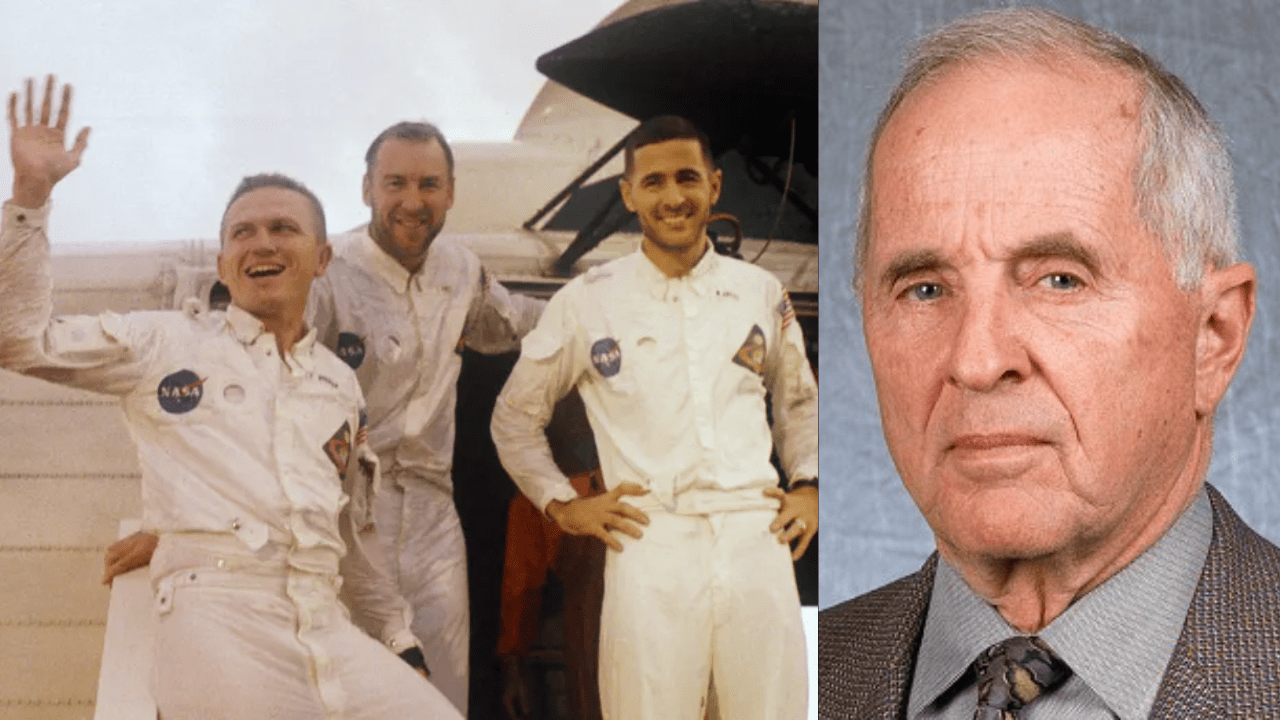William Anders, Pioneering Astronaut and Earthrise Icon, Killed in Washington Plane Disaster!

Retired Maj. Gen. William Anders, the renowned Apollo 8 astronaut celebrated for capturing the iconic “Earthrise” photograph in 1968, tragically passed away on Friday. The 90-year-old was piloting a plane alone when it crashed into the waters of the San Juan Islands in Washington state. His son, retired Air Force Lt. Col. Greg Anders, confirmed the heartbreaking news to The Associated Press.
“The family is devastated,” Greg Anders shared. “He was a great pilot and we will miss him terribly.”
William Anders, a key figure in the Apollo 8 mission, often reflected on the significance of his famous photograph. The “Earthrise” image, which shows our planet as a shadowed blue marble against the vastness of space, is considered one of the most impactful photos ever taken. It reshaped humanity’s perception of Earth, highlighting its fragility and the urgent need for environmental stewardship.
Earthrise Legend William Anders Perishes in Tragic Washington Plane Crash
This powerful image is widely credited with igniting the global environmental movement. By portraying Earth as a small, delicate sphere floating in the vastness of space, it underscored the planet’s isolation and vulnerability, prompting a deeper ecological awareness worldwide.
Arizona Senator Mark Kelly, also a retired NASA astronaut, paid tribute to Anders on social media, stating, “Bill Anders forever changed our perspective of our planet and ourselves with his famous Earthrise photo on Apollo 8. He inspired me and generations of astronauts and explorers. My thoughts are with his family and friends.”
The crash report came in at approximately 11:40 a.m. Witnesses described seeing an older-model plane plummet into the water near the north end of Jones Island before it sank. According to the Federal Aviation Administration, Anders was the sole occupant of the Beech A45 airplane at the time of the accident. The National Transportation Safety Board and FAA are currently investigating the crash to determine its cause.
In a 1997 oral history interview with NASA, Anders reflected on the risks and rewards of the Apollo 8 mission. He acknowledged that the mission was fraught with uncertainties, estimating a one-in-three chance of not returning safely, an equal chance of success, and the same odds that the mission might not commence at all. Despite these daunting risks, he felt that the national, patriotic, and exploratory imperatives justified the endeavor. He even suggested that Christopher Columbus might have set sail with even worse odds.
Describing the experience of seeing Earth from space, Anders recounted, “We’d been going backwards and upside down, didn’t really see the Earth or the Sun, and when we rolled around and came around and saw the first Earthrise. That certainly was, by far, the most impressive thing. To see this very delicate, colorful orb which to me looked like a Christmas tree ornament coming up over this very stark, ugly lunar landscape really contrasted.”
This vivid description captures the awe and wonder felt by the Apollo 8 crew as they witnessed Earth rising over the moon’s barren surface. The photograph not only captivated the world but also served as a poignant reminder of our planet’s beauty and the imperative to protect it.
William Anders’ contributions to space exploration extend beyond his photographic achievement. As part of the historic Apollo 8 mission, he played a crucial role in ensuring the functionality of the command module and service module, pivotal components of the spacecraft. His efforts were instrumental in the mission’s success, marking a significant milestone in human space exploration.
Anders’ legacy is marked by his profound impact on both space exploration and environmental consciousness. The “Earthrise” photo remains a symbol of planetary unity and vulnerability, inspiring countless individuals to reflect on the importance of preserving our fragile home.
As the world mourns the loss of William Anders, his contributions to science, exploration, and environmental awareness endure. His life and work continue to inspire new generations of astronauts, scientists, and environmentalists, reminding us of the profound interconnectedness of all life on Earth.
In the wake of this tragic accident, the space community and the world at large remember William Anders not only as an exceptional astronaut but also as a visionary who helped us see our planet in a new light. His enduring legacy will forever be intertwined with the iconic image of Earth rising above the lunar horizon, a testament to his remarkable contributions to humanity’s understanding of our place in the universe.
Also Read:

The Psychology of Love: Why Valentines Day Matters More Epic Than You Think
Discover the psychology of love and why Valentines Day is more important than you think. Learn how love impacts the brain, strengthens relationships, and boosts

Premier League Highlights: Arsenal Humiliate Man City 5-1, Spurs and Palace Secure Crucial Wins
Arsenal demolished Manchester City 5-1 in a statement premier league highlights win, reigniting their title hopes. Meanwhile, Crystal Palace stunned Man United 2-0, and Tottenham

How Budget 2025 Impacts the Indian Middle-Class: Major Tax Benefits and Glaring Omissions
Budget 2025 offers major tax relief to the middle class, including zero tax on incomes up to ₹12 lakh. However, it misses out on incentives

Degrees vs Employability: Why “Highly Qualified Degree Holders” Struggle to Find Jobs While “Less Qualified Individuals” Get Hired Faster!
Many highly qualified individuals struggle to secure jobs, while less qualified candidates get hired quickly. This Degrees vs Employability paradox is caused by employer preferences,

The Power of Mindset: Why Looking Poor Doesn’t Make You Poor, but Thinking Poor Does!
Discover why looking poor doesn’t define your wealth but thinking poor does. Learn the power of mindset and how a growth-oriented mindset can lead to

Overthinking: How It’s Damaging Today’s Youth – Causes and Cure in 2025
Understanding how overthinking is silently damaging today’s youth, from its causes rooted in societal pressure and social media to its long-term effects on mental health.
